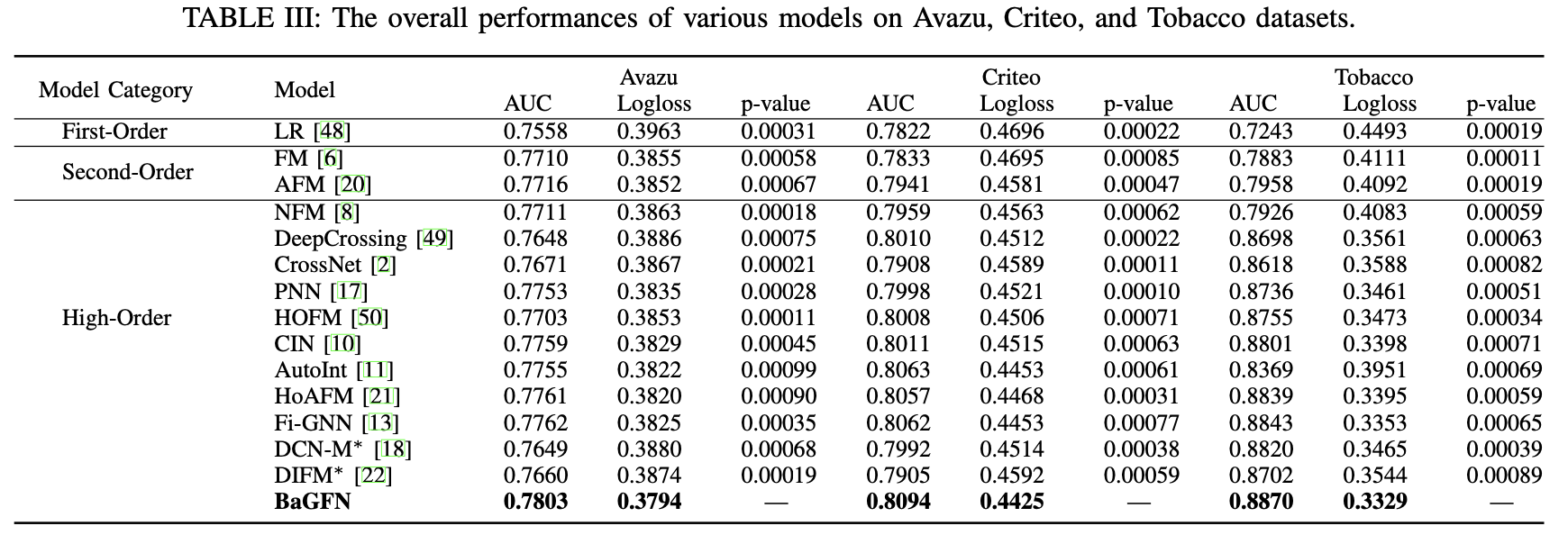Modeling feature interactions is of crucial significance to high-quality feature engineering on multi-filed sparse data. At present, a series of state-of-the-art methods extract cross features in a rather implicit bit-wise fashion and lack enough comprehensive and flexible competence of learning sophisticated interactions among different feature fields. Broad Attentive Graph Fusion Network (BaGFN) better models high-order feature interactions in a flexible and explicit manner. On the one hand, we design an attentive graph fusion module to strengthen high-order feature representation under graph structure. The graph-based module develops a new bilinear-cross aggregation function to aggregate the graph node information, employs the self-attention mechanism to learn the impact of neighborhood nodes, and updates the high-order representation of features by multi-hop fusion steps. On the other hand, we further construct broad attentive cross module to refine high-order feature interactions at a bit-wise level. The optimized module designs a new broad attention mechanism to dynamically learn the importance weights of cross features and efficiently conduct the sophisticated high-order feature interactions at the granularity of feature dimensions.
Since we repeated experiments and adjusted parameters, the performances are better than those in the paper:
Avazu:
The code runs on the following environment:
- Tensorflow 1.14
- python 3.6
- CUDA 10.0+ (For GPU)
- Other requirements:
pip install -r requirements.txt
- Datasets (Avazu and Criteo) can be downloaded from Kaggel Avazu, Kaggle Criteo
- Please refer to data process.
- Since the train_examples.txt is tiny, we run the training with batch_size=4:
CUDA_VISIBLE_DEVICES=0 python train.py --batch_size 4 - Default training configs can be modified in function
parse_argsof train.py. - Feel free to run the code with specifically parameters on whole dataset:
CUDA_VISIBLE_DEVICES=0 python train.py \
--embedding_size 20 \
--num_gnn 3 \
--epoch 3 \
--batch_size 1024 \
--learning_rate 0.001 \
--optimizer_type adam \
--field_size 39 \
--checkpoint_dir ./checkpoints/Criteo \
--log_dir ./logs/Criteo \
--data Criteo \
--data_path ./data/Criteo/ \
--run_times 1Have a fast start with docker demo.
If you find BaGFN useful for your research, please consider citing the following paper:
@ARTICLE{9565146,
author={Xie, Zhifeng and Zhang, Wenling and Sheng, Bin and Li, Ping and Chen, C. L. Philip},
journal={IEEE Transactions on Neural Networks and Learning Systems},
title={BaGFN: Broad Attentive Graph Fusion Network for High-Order Feature Interactions},
year={2023},
volume={34},
number={8},
pages={4499-4513},
doi={10.1109/TNNLS.2021.3116209}}
This code repository gets inspirations from Song's Autoint.



